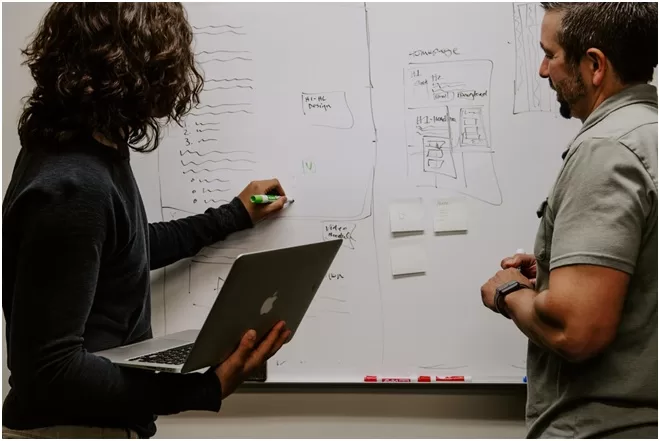Lifestyle
Accident Prevention In The Workplace – Guidelines And Recommendations

A single workplace accident can cause great financial damage and have a negative on your business’ reputation.
In an ideal world, work environments are accident-free, but sadly, the reality is that no matter how many precautions you take, sometimes accidents happen, and you can only handle the consequences as best as possible. However, you shouldn’t use this as an excuse to neglect workplace safety. On the contrary, you should make an effort to constantly provide your workers with a safe and secure setting where they feel comfortable working. Create a workplace safety plan that mitigates risks and provides information on how to handle common accidents.
Accidents are defined as events that happen without apparent causes. But in most cases, accidents could be prevented if particular actions would have been taken before the event to mitigate hazards. When an unexpected incident or accident happens in your workplace, analyse it to identify the causes that led to it and develop strategies that would prevent another from happening again. You can identify the instances you could prevent and develop strategies to manage them by investigating accidents.
Workplace management can help you prevent and lower the number of accidents. Here are some recommendations meant to help you create a comprehensive workplace management plan.

Source: Unsplash
Create a safety and wellness plan
The secret to creating a safe work environment is to have a well-designed safety and wellness plan in place, so you can prevent accidents and handle them properly when they happen. The program must include information about employee safety on all levels and promote health in the workplace. Your safety and wellness plan should provide the workers with ways and methods to report hazardous behaviour and practices, so they feel comfortable contacting the management when they don’t feel safe or identify a dangerous situation. If you lack knowledge on how to create a safety and wellness program, get in touch with a professional experienced in developing such plans so they can evaluate your company’s needs and identify the best measures you can take to boost safety.
Be aware of musculoskeletal injuries and disorders
Besides the obvious hazards present in your workplace, other factors could also put your employees’ health at risk. Poor ergonomics is one of the main causes of occupational injuries. It doesn’t matter if your staff works in an office or construction site; bad posture could have severe consequences on their health. Make sure that everyone takes a proactive approach regarding musculoskeletal injuries and disorders. When discussing workplace injuries, musculoskeletal injuries are often ignored and addressed with reactive measures instead of proactive ones. But as you may already know, it’s wiser to address the factors that could lead to an injury or accident than deal with the results.
Therefore, you must take a holistic approach and compartmentalise the risk of your staff suffering musculoskeletal injuries. Teach your employees to care for their bodies when working because they cannot swap them with other ones when they leave their shift, and their health issues will follow them home.
Promote safety awareness
Safety experts recommend companies provide their staff with effective training to prevent accidents. Your team needs to understand the risks associated with their jobs and how they could lead to an injury or even fatality. When you hire someone, make sure to integrate information about the dimensions of their jobs that could trigger injuries into their training so they’re aware of them when working. Evaluate your operations and look for the factors that could turn into injuries and risks. Try to find out if the risks are multifactorial or triggered by a single event to be able to create an effective workplace safety plan. When employees get injured in the workplace, they collaborate with companies like Accident Claims to get compensation for their injuries, which can trigger negative financial consequences for your business.
Educate your employees
Besides training new employees, you should continually cultivate a safety standard among your staff. Teach your employees about the importance of meeting safety regulations and following the designed recommendations when competing activities. When necessary, offer your workers supplemental training to ensure they know how to use new pieces of equipment and tools. Also, evaluate your work methods periodically and ensure that everyone knows how to move and lift items properly to protect their health.
Provide employees with protection equipment
Personal protection equipment is paramount in the workplace and you should enforce it at hiring, during periodic meetings, and with spontaneous monitoring. Assign a team leader to teach employees how to properly wear and use face protection, goggles, safety shoes, hard hats, earmuffs, and earplugs.
Depending on your local safety regulations, you may be obliged to prove some basic level of PPE to your employees. But even if the authorities don’t ask you to do it, evaluate the risks associated with your operations and provide the staff with adequate equipment to reinforce their confidence.
Identify safety vulnerabilities
Your operations and workplace setting are unique and don’t necessarily have the same safety concerns as other businesses in the same sector. So, you must evaluate your work conditions to identify safety vulnerabilities that could trigger accidents and create strategies to prevent them from happening. It would be wise to assign a team to handle this job. It may seem like an essential piece of advice, but understanding the dangers that lurk around your business is an integral part of accident prevention.
Investigate the cause and make changes
Sadly, injuries tend to repeat in some work environments. If one worker trips and falls, the chances for another to do so in the same conditions are high. To prevent this, you should require someone to investigate the causes of the accident and take the necessary measures to remove them.
Besides the physical risks that could cause injuries, your workers are also prone to musculoskeletal injuries. If one of them gets sick due to repetitive action, make sure to include some task variation in their job to promote physical activity and deter the risk of other employees dealing with the same medical problem.
And these are the most effective recommendations on how to prevent accidents in the workplace.

















































